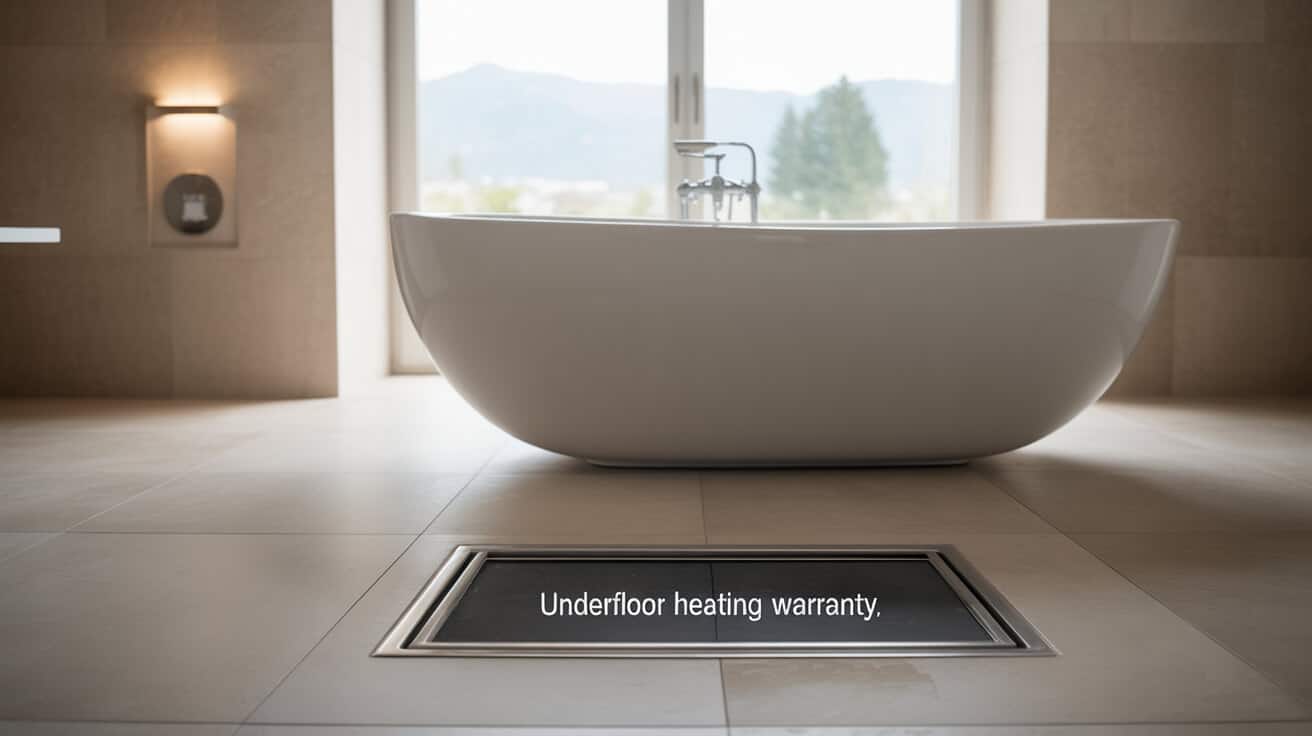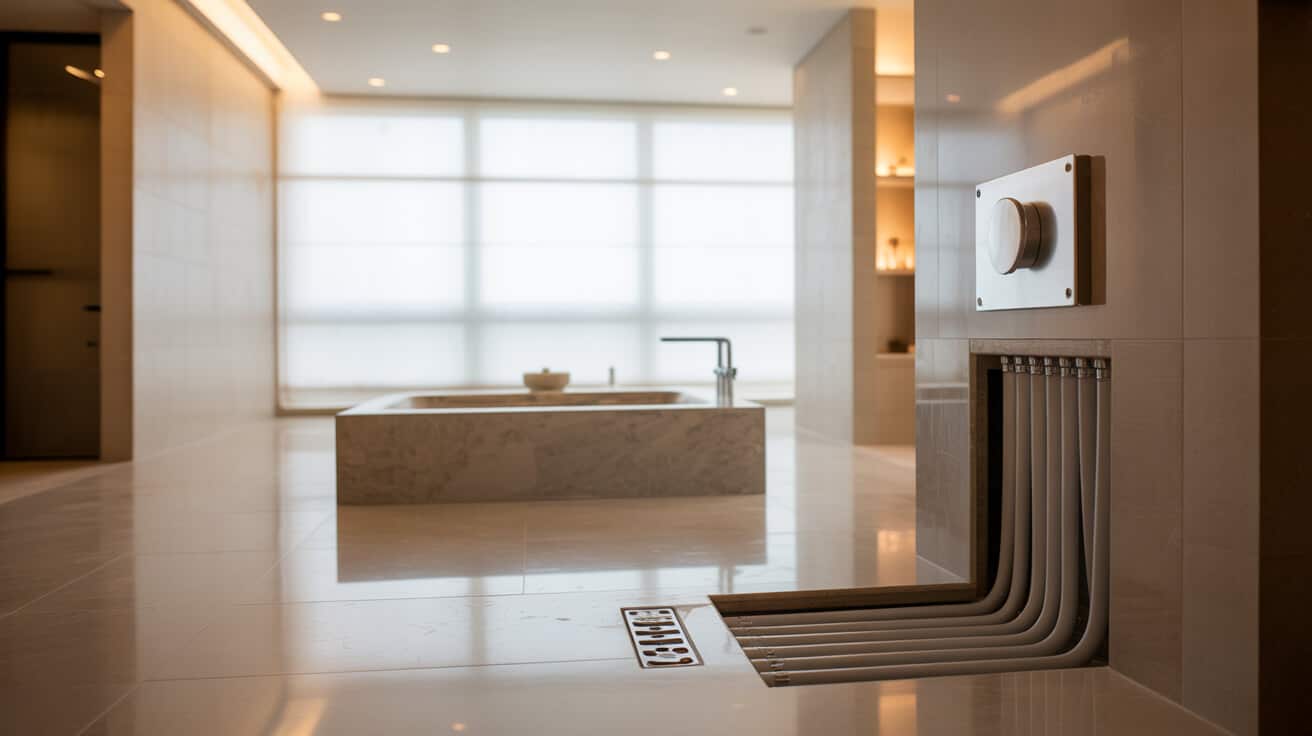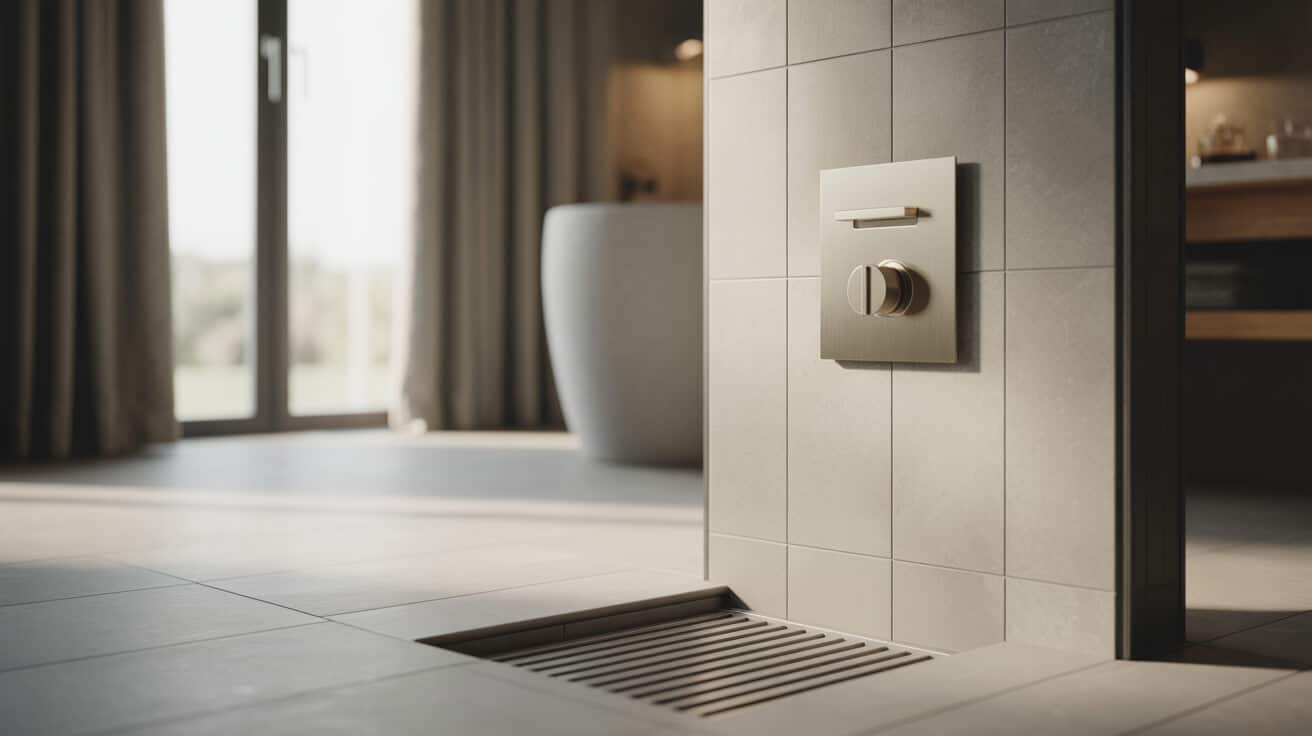| Coverage Category | Key Definition | User Impact |
|---|---|---|
| Manufacturer coverage | Guarantees materials and system components | Ensures repair/replacement of defective hardware |
| Installer workmanship | Assures qualified installation and compliance | Protects you from errors during setup |
| Activation process | Registration and documentation required | Validates your entitlement to future claims |
| Maintenance/logbooks | Periodic servicing, service records | Preserves your ongoing coverage and ensures evidence |
| Exclusions/limitations | Scenarios where coverage does not apply | Alerts you to compliance risks and documentation gaps |
Across the sector, property professionals and contractors increasingly leverage comprehensive warranties not only for peace of mind, but as a differentiator in competitive markets. System owners securing warranty alignment with providers—such as Plumbers 4U—preserve long-term confidence, reduce avoidable costs, and support compliance with ever-evolving technical standards.
Lead
Underfloor heating warranty conditions define the legal, procedural, and technical parameters governing the repair, replacement, and servicing obligations related to underfloor heating installations. These terms are shaped by a convergence of manufacturer policies, installer warranties, and regulatory mandates that collectively delineate both the protections and requirements throughout your system’s operational life. The contemporary landscape necessitates close attention to activation criteria, performance standards, documentation retention, and proactive maintenance, all governed by the interplay between owners, agents, regulators, and certified professionals.
Etymology or name origin
“Warranty” as a contractual guarantee has roots in early Anglo-Norman law, evolving through centuries of trade and property legislation to encompass explicit recourse for purchasers against defects or non-performance. The phrase “underfloor heating” merges historical ideas of radiant heat distribution—tracing back to hypocaust systems in ancient civilizations—with 20th-century developments in standardised plumbing, electrical cabling, and modular component design. As both fields matured, the specification of warranty conditions became a core feature of compliant property and engineering practice, reflecting shifts from oral assurance to certified documentation.
Overview / context
Warranties for underfloor heating provide reassurance that your system will meet defined operational and safety benchmarks over an extended duration. As adoption has scaled across residential, commercial, and institutional properties, you encounter increasing complexity in the integration of multiple technologies, supplier roles, and user-driven service patterns. Coverage is typically stratified between manufacturers, who stand behind material and product quality, and installers, whose craftsmanship and compliance ensure optimal operation. The rise of specialist providers such as Plumbers 4U introduces an additional assurance layer, as leading firms emphasise transparent terms, digital activation, and clear aftercare support.
In a context shaped by tighter energy standards, evolving landlord obligations, and more frequent system hybridization, understanding warranty provisions has become an indispensable aspect of asset stewardship for all stakeholders—from the first-time buyer to the facilities director managing nationwide portfolios.

History
Origins
The foundations of underfloor heating warranty practice can be traced to early contract law and master craftsman guarantees, in which liability for defects or incomplete work was often negotiated directly and informally. As heating systems evolved from bespoke masonry hypocausts and steam-based radiators to modular, factory-built components, formal written guarantees grew in prominence, particularly in union and regulated trades.
Industrial emergence
The 1960s and 1970s witnessed an acceleration of hydronic (water-based) and electric underfloor heating installations, prompting manufacturers to experiment with performance and service guarantees that exceeded statutory minimums. The alignment of warranty language with British and European standards—among them BS EN 1264 for hydronic system design and testing—catalysed standardisation. Installers, often working in partnership or as approved agents of manufacturers, began to issue separate workmanship guarantees, reinforcing user protection during property transfers, rental, and commercial handovers.
Contemporary evolution
By the early 21st century, competitive market pressure had produced a landscape where leading manufacturers offered warranties exceeding 20 or even 50 years for certain system elements, contingent on installation compliance and regular maintenance. Concurrently, digital registration and cloud-based document management simplified activation and storage. Increasingly, insurers and financial product providers entered the market, offering “insurance-backed” or transferable warranties that survive supplier insolvency or property resale, benefiting you as a long-term asset manager.
Concept / description
A warranty overlays a set of obligations onto the relationship between the system provider, installer, and the end-user—legally binding these parties to specific standards of quality and recourse. In practice, the scope of a warranty extends beyond mere replacement of defective parts to encompass:
- Explicit coverage: for piping, cables, thermostats, manifolds, insulation boards, and ancillary hardware
- Defined timeframes: for claims, which may vary by component (e.g., 10–50 years for pipework, 2–5 years for controllers and electronics)
- Procedural requirements: such as the necessity to register your system post-installation (often within 30 to 90 days)
- Conditional triggers: for claim enforcement, including proof of purchase, installer certification, commissioning logs, and maintenance records
Coverage demarcation often distinguishes between the manufacturer’s liability (materials, build quality) and that of the installer (proper commissioning, installation, and initial system testing). Large property portfolios, social housing, and commercial installations may initiate additional complexity due to segmented roles and documentation responsibilities.
Functionality / purpose / applications
Warranty frameworks for underfloor heating are engineered to protect you financially and operationally from the risks of premature system failure, latent defects, or installation errors. Functionally, warranties:
- Assign primary responsibility for component integrity and operational safety to manufacturers, underpinned by quality assurance processes and supply chain controls
- Allocate legal and economic obligations for installation conformity to certified professionals, often in partnership with branded service providers such as Plumbers 4U
- Establish objective procedures for dispute resolution and claims, often integrating third-party mediation or insurance oversight to further de-risk outcomes
Applications of warranty conditions extend throughout the property lifecycle, including:
- New build developments: Seamless integration into asset schedules and handover protocols
- Retrofit/upgrades: Ensuring new investments in energy-efficient heating are safeguarded against installation risk or supply chain shocks
- Rental properties: Satisfying legislative obligations that require system safety and tenant protection (with explicit documentation supporting landlord compliance)
- Commercial leasing/operation: Institutionalising maintenance, compliance, and documentation as a function of facilities management
By aligning your service patterns and document retention practices with warranty requirements, you ensure asset resilience, limit operational downtime, and enable transmission of protection upon sale, lease, or transfer.
Classifications / types / variants
Hydronic and electric systems
Hydronic systems deploy water circulating through plastic or composite pipe grids within subfloor screed, while electric systems employ cabling or mats generating radiant heat. Warranty conditions frequently distinguish between the two:
- Hydronic warranties: Emphasise pipework longevity, integrity of manifold assemblies, and corrosion risk, often requiring periodic inhibitor treatment and pressure monitoring. Duration typically ranges from 15 to 50 years for pipe sections.
- Electric warranties: Focus on cable/mat robustness, controller circuit reliability, and insulation integrity. Lifespan for these components often falls between 10 and 25 years, depending on manufacturer confidence and installation evidence.
Warranty providers
- Manufacturer warranties: Most prevalent; offered on verified components, conditional on documentation and compliant installation.
- Installer/contractor warranties: Supplement component cover; may bridge the gap between product guarantee and real-world commissioning/fitment, typically ranging from 1 to 5 years for labour or errors during installation.
- Insurance-backed or third-party warranties: Fill the liability gap if a supplier ceases trade or for assets changing hands, often playing a critical role in commercial and managed property settings.
Coverage categories
Warranties may be further segmented into:
- Full-system or part-specific guarantees
- Single-property vs. multi-unit/portfolio coverage
- Transferable vs. non-transferable terms (crucial for property transaction stakeholders)
- Layered arrangements integrating controls, heating sources (e.g., boilers/heat pumps), and renewables

Systems / tools / methodologies
Activation mechanisms
The process of warranty activation is highly procedural. Common requirements for you include:
- Product registration: Submission online or by post, with proof of purchase and, commonly, an installation certificate from an accredited professional.
- Commissioning log: Completion and retention of official testing and handover forms attesting to system compliance and safety.
- Maintenance agreements: Arrangement for annual or periodic servicing (mandatory for most hydronic warranties).
Monitoring tools
Diagnostics and servicing often utilise:
- Electrical resistance or insulation testers: Essential for verifying conductor integrity in electric UFH systems.
- Thermal imaging cameras: Used to map temperature distribution and identify potential underfloor faults.
- Flow metres and pressure gauges: Monitor hydronic system performance and detect leaks or blockages before major failure occurs.
Documentation systems
Your effective management of warranty obligations is aided by:
- Digital logbooks/online portals: Enable automated record-keeping of service intervals, technician credentials, and fault histories.
- Physical binders or onsite files: Retain hard copies of commissioning, registration, and maintenance documents—still favoured by many property managers for audit compliance.
Claims pathways
When faults emerge, established claims routes require you to:
- Collect and submit all relevant documentation
- Arrange site inspection or upload photographic/video evidence
- Respond to technical queries, clarify service anomalies, or prove compliance with fluid sampling schedules (hydronic)
- Interface with Plumbers 4U or equivalent authorised service partners for expedited remediation where covered
Stakeholders / entities involved
Homeowners and residents
Your role evolves from activating the warranty and storing critical documents to ensuring regular (often annual) maintenance. The clarity and thoroughness of your record-keeping has a direct impact on the validity of your warranty claims when issues arise.
Landlords and property managers
Expectations extend to overseeing compliance across multiple assets, maintaining evidence of accredited installation, and managing timely service intervals and occupant reporting.
Commercial owners and facilities directors
Your focus is on minimising operational risk, planning coordinated servicing across building portfolios, and adapting warranty records to turnover of staff, residency, or leaseholders.
Installers and service contractors
Accredited professionals, such as the teams at Plumbers 4U, have an obligation to comply with current technical standards, certify installation, advise on compatible flooring, and train your site staff in warranty-preserving aftercare.
Manufacturers, insurers, and compliance bodies
Manufacturers shoulder product liability, monitor recall performance, and sometimes underwrite insurance-backed warranties. Insurers adjudicate on extended-loss claims and preserve continuity in the event of manufacturer failure. Trade organisations and regulatory bodies establish minimum documentation and reporting benchmarks.
Legal / regulatory / ethical considerations
Building Regulations and standards
Compulsory adherence to the following applies:
- UK Building Regulations: Part L (energy conservation), Part G (sanitation and water), Part P (electrical safety), and Part E (acoustics for multifamily dwellings). Non-conformance may void warranty coverage.
- British/European standards: BS EN 1264 series (hydronic), with WRAS compatibility required for water contact components.
- Consumer and property law: Legislation governing transferability, landlord-tenant relationships, and statutory protection is especially salient in multi-asset portfolios and commercial buildings.
Documentation and fairness
Proactive, verifiable record-keeping underpins your legal claim on warranty protections. You should consider periodic audits of system logs, service histories, and registration certificates to preempt denial of future claims. Ethically, prompt reaction to identified issues and engagement of accredited professionals supports both the spirit and letter of company and regulatory expectations.
Performance metrics / data / measurements
Measurement categories
An efficient maintenance schedule integrates regular observation of key performance variables:
- Temperature profiles across zones: To reveal malfunctions or insulation defects.
- System flow and pressure readings: Support predictive diagnostic and substantiate warranty obligations, particularly in large or ageing properties.
- Electrical system readings: Provide early detection of resistance anomalies or potential mat/cable failures, critical for electric installations.
Data use and retention
You should maintain complete, easily recoverable logs for the warranty period or asset holding term. Digital storage methods, cloud platforms, and secure backups increasingly supplement paper-based systems, supporting rapid claim facilitation and mitigating the risk of lost or damaged records.
Asset-level tracking
Commercial portfolios benefit from asset-level registration and maintenance tracking, where each unique system is mapped, dated, and serviced according to manufacturer protocol, optimising the claim process and minimising asset downtime.
Challenges / barriers / limitations
Technical and documentation difficulties
The most frequent hurdles to a successful claim include incomplete or missing documentation, the use of unapproved installation techniques, and loss of continuity in service intervals (e.g., during tenant or manager turnover). Integrating older systems with new controls or energy sources frequently complicates warranty boundaries, requiring technical consultation and clear records.
Social and economic context
Economic constraints may affect your willingness to pursue regular servicing or replace key components on schedule, creating vulnerabilities in coverage. Portfolios with numerous properties demand scalable document management and staff training systems to preserve claim eligibility. The cultural dimension sees competing definitions of “reasonable care” between installers, owners, and manufacturers, sometimes resulting in adversarial claims environments.
Regulatory and legal complexity
Regulatory shifts frequently rewrite claim conditions, requiring you to remain attentive to both legacy regulations and new legal precedents—particularly when transferring assets, renegotiating leases, or reassessing insurance strategies.
Impact / influence / legacy
The clear articulation of underfloor heating warranty conditions produces a measurable enhancement of asset value and property transaction efficiency. Well-crafted warranty frameworks reduce the volume and duration of legal disputes, fortify property sales and rental negotiations, and encourage sustained investment in system innovation. Leading brands like Plumbers 4U, by prioritising transparency and compliance, shape a market landscape where customer and regulatory confidence is preserved—supporting your control over asset risk, property reputation, and user safety.
Warranty clarity also ripples through supply chains, raising the expectations for manufacturers, distributors, and contractors to adhere to higher standards, ultimately benefiting you and every stakeholder in the asset ecosystem.
Future directions, cultural relevance, and design discourse
Digitally-enabled systems, predictive service regimes, and greater legal harmonisation across the UK and beyond are reengineering warranty administration. You are likely to see:
- Warranties integrated with building management systems, enabling proactive notification of faults and easier compliance audits.
- Expansion of insurance-backed, lifetime, or modular coverage options tailored to your asset type and service pattern.
- Continued evolution in stakeholder expectations, with increased demand for accessible documentation, transparent obligations, and sustainability credentials.
The cultural paradigm around asset protection now intertwines technical, legal, and user-experience dimensions. Brands such as Plumbers 4U are increasingly judged by their ability to offer seamless support structures, maintain regulatory foresight, and safeguard your investment across decades of system use. As standards rise and regulation becomes more dynamic, the narrative of underfloor heating warranties continues to shape—and be shaped by—the evolving values, economics, and performance demands of the property and facilities sector.

